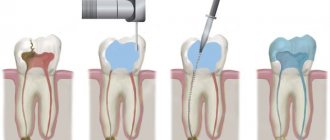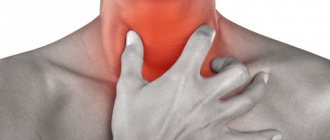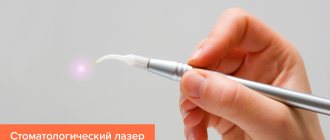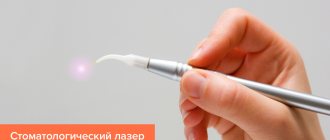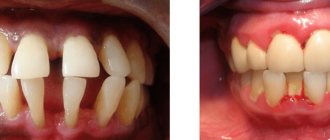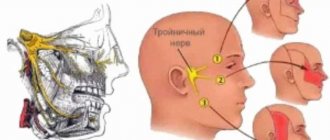Headaches and severe eye pain may indicate a serious problem and ongoing illness. Pain receptors can be located in veins, blood vessels, and the lining of the brain. Therefore, it may seem that the head hurts on one side.
Painful sensations affect the eyes. Most often, the causes of pain on the right side can be from mechanical damage or migraine , in rare cases - tumors and malignant formations .
Attention! If the discomfort is very strong, you should consult a specialist and undergo an examination. After all, any, even minor, pain indicates a problem.
Causes of pain on the right side of the head and eyes
Of the main reasons, several main ones can be identified, but it is worth remembering that prolonged headache discomfort cannot be ignored, especially when it causes severe discomfort.
Main reasons:
- Severe fatigue and overstrain . Discomfort in the head, sometimes strong pulsation and discomfort in the eyes. May occur due to working at a computer or TV. This condition usually occurs in the morning or evening, and is accompanied by tingling in the temples and forehead.
- Various bruises ( blows, concussion ). Even a small blow can cause a concussion and further development of brain diseases.
- Eye diseases (glaucoma). Maybe in one eye, which causes a lot of discomfort. They usually cause the eye to tingle and become blurry.
- Incorrectly fitted glasses or contact lenses. If there is discomfort in one or both eyes, it can cause migraines, tearing and fatigue.
- Spasms of blood vessels . As a result of improperly performed physical exercises, a clamp or damage to a blood vessel can be created in the cervical spine. This will further cause discomfort in the head on the right side, as well as small hemorrhages, which cause migraines and discomfort on the right side. But at the same time, the patient feels nausea, lethargy, and inability to concentrate.
- Very often, athletes suffering from osteochondrosis suffer from headaches, as well as dizziness, neck discomfort, and pain in the eyes. Such symptoms can occur on the right or left, periodically weakening and intensifying.
Brain tumors, meningitis, pre-stroke conditions, and intracranial hematoma are also possible causes of discomfort.
Painful sensations from tumors do not depend on its size, but in addition to unpleasant sensations in the head on the right side, the patient:
- loses weight quickly,
- suffers from seizures
- In the morning the patient may feel nauseous.
Keep in mind! Migraines can occur in people between 25 and 45 years of age. In this case, the discomfort is reflected in one part of the head, affecting pain in the eyes.
This may cause a cramp or slight tingling in the limbs.
Migraines include a serious disease called hemicrania, which often affects women. The discomfort from such a disease is very strong, and externally, the pupils of the eyes become very narrow, and the eyes themselves become very red.
Pain in the right side of the head and right eye can also hurt due to an eye injury, as well as due to
an infectious disease .
And also for colds and breathing problems. If the vessels are damaged, a person who complains of discomfort on the right side of the head may also report pain under the right eye.
Facial pain
The face is an important component of a person’s image; it reflects not only our mood and success in life, but also our well-being. Therefore, the significance of pain in this part of the body is difficult to overestimate.
Unfortunately, it is not always possible to make a correct diagnosis right away, because there are many reasons for the development of facial pain. Most often, both patients and doctors sin due to dental diseases. Often the patient even loses perfectly healthy teeth in an attempt to get rid of the pain before the correct diagnosis is made.
Why does it hurt?
Attention! This article will not
facial pain caused by diseases of the ENT organs, eyes and dental system, primary headaches (migraine, tension headache, cluster headache) are described (according to the International Classification of Headache Disorders, 2004).
Patients are often concerned about trigeminal neuralgia, Tholos Hunt syndrome, and atypical facial pain.
1. For trigeminal neuralgia
pain most often occurs in the area of the second and third branches of the nerve (upper and lower jaw). The disease is characterized by severe short-term attacks of pain lasting up to 2 minutes, which are provoked by irritation of a certain area of the skin of the face or the mucous membrane of the mouth or nose. Pain can be triggered by the most ordinary events - eating cold or hot food, wiping the face with a towel, etc. Usually, after the onset of an attack, a person does not cry or scream, but freezes in place, waiting for the severe pain to subside.
The causes of neuralgia can be brain tumors, multiple sclerosis, infectious diseases (most often herpes zoster), vasoneural conflict (contact irritation of the trigeminal nerve by a nearby artery).
Neuralgia of other cranial nerves (glossopharyngeal, laryngeal, etc.) can also cause facial pain, but are extremely rare.
2. If you gradually develop symptoms such as “boring” or “gnawing” pain in the eye, redness, double vision, drooping eyelid and exophthalmos (displacement of the eyeball forward, “bulging eye”), then most likely this is a syndrome Tolosa Hunta (painful ophthalmoplegia)
. Symptoms usually get worse over a few days. There may be spontaneous improvements. Another characteristic feature of this disease is the dramatic improvement with corticosteroids.
The diagnosis of Tholos Hunt syndrome is made if all other causes have been excluded, and there are many of them: infectious diseases, tumors, vascular lesions, sarcoidosis. The causes of this disease are not fully understood; it is believed that the main mechanism of development is autoimmune.
3. Atypical facial pain
is another cause of facial pain that is a diagnosis of exclusion. When examined and questioned, patients with atypical facial pain indicate areas of pain that do not fit into any zone of innervation of the cranial nerves.
The characteristics of pain can be very different, the manifestations are disguised as diseases of the teeth, ENT organs and other diseases. Such patients often have to go through many examinations by a dentist, maxillofacial surgeon, ENT surgeon, and neurologist. Moreover, the data from these examinations do not explain the cause of facial pain.
And that's not so bad. Healthy teeth are often removed, believing that facial pain is caused by dental pathology. Another problem is that patients with this disease often suffer from depression, anxiety and other mental disorders, which makes both treatment and diagnosis difficult. Actually, these pains are considered psychogenic. Most often they are provoked by stress or some kind of mental disorder.
Surveys
For facial pain, consultations with a dentist, ENT specialist, ophthalmologist, and sometimes an oral surgeon are often required to rule out pain that is NOT caused by neurological problems.
In most cases of facial pain, it is necessary to perform an MRI (often with contrast, in various modes) of the brain to exclude tumors, multiple sclerosis, vasoneural conflicts and other pathologies.
Treatment
In most cases of facial pain, with the possible exception of Tolos Hunt syndrome (which is treated as an autoimmune disease with hormones), you will be offered anticonvulsants (eg, carbamazepine, pregabalin, topiramate) or antidepressants (amitriptyline, duloxetine). The fact is that it is these groups of drugs that are most effective in treating pain.
If there is a vasoneural conflict (for example, with trigeminal neuralgia), you may also be offered a neurosurgical operation, when a special gasket is installed between the vessel and the trigeminal nerve, which prevents the artery from irritating the trigeminal nerve. Non-medicinal methods are also very effective - acupuncture, physiotherapy, biofeedback methods, psychotherapy, etc.
In any case, do not self-diagnose or self-medicate, consult a doctor.
Be healthy!
Maria Meshcherina
Photo istockphoto.com
Treatment
It is worth noting! Before starting treatment for a headache, you need to undergo an examination by a specialist to identify possible causes of this condition on the right side of the head. To do this you need:
- Take an extensive blood test (such an analysis will show all possible deviations from the norm and the causes of frequent discomfort).
- Get a CT scan (CT scans can detect tumors or blood vessel problems).
- Get examined by an ophthalmologist . Even if you don't have vision problems.
Based on the test results and tomography data, the doctor will be able to prescribe treatment. If the pain continues for a short time, you can take painkillers .
Analgin, Spazmalgon, Citramon relieve pain well.
All these tablets quickly dilate blood vessels, eliminate spasms and pain.
If a person has a severe migraine , which creates severe pain on the right side of the head, then doctors recommend taking anti-inflammatory drugs .
Possible reasons
Tingling under the eye may be a symptom of one of the following conditions::
- Sinusitis . The pathology is an inflammation of the nasal sinuses, which communicate with the lacrimal canals. With this disease, the maxillary sinuses, which are located under the eye sockets, become clogged with purulent discharge. The pathology in its advanced form can progress to the chronic stage, and inflammatory processes can spread to the upper respiratory tract. Treatment in this case is carried out by an otolaryngologist, who prescribes appropriate anti-inflammatory and, if necessary, antibacterial drugs.
- Osteomyelitis . A purulent-necrotic process in the bones, which can develop against the background of complications of dental diseases, when infectious processes from the teeth of the upper jaw spread to the infraorbital bones. Treatment consists of taking immunostimulating and antibacterial drugs, vitamins, and in severe cases, blood plasma transfusion to detoxify the body.
- Mechanical damage to the periocular area. Painful sensations in such cases require, first of all, symptomatic treatment and the use of painkillers. And with concomitant damage to the eyeball and penetrating wounds, antibacterial treatment and surgical intervention are necessary.
- Neuralgic pathologies. Such disorders are usually accompanied by a complex of symptoms, including disturbances in facial expressions, numbness of the facial, hypoglossal and pharyngeal nerves. Often the patient experiences tingling sensations in the temples, shoulders or neck.
- Disturbances in the activity of the vascular system of the organs of vision . In such cases, the patient may feel pain in the bone under the eye, but this syndrome only affects the blood vessels and soft tissues.
Only a specialist can determine what exactly causes such a symptom after conducting an appropriate examination.
Treatment is determined solely by the origin of the pathology and its severity.
Prevention measures
To avoid headaches and the causes that provoke them, you need to use the following preventive measures:
- rest and exercise;
- good sleep and frequent walks in the fresh air ;
- complete rest for the eyes ;
- proper nutrition , eating fresh vegetables and fruits;
- drink a lot of water , which saturates with oxygen and improves blood quality.
Massage, sauna, and going to the pool also have a very . These simple recommendations can be followed by every person.
Stay up to date! If you are faced with a migraine or headache, you can take a painkiller, but if the symptoms still do not go away, you need to seek help.
Symptoms of pain under the eye
Note! Painful sensations in the infraorbital area are often perceived as pain in the bone, but in most cases (excluding traumatic ones) soft tissues hurt.
Depending on the disease, tingling may vary in nature and intensity. Most often, such sensations are caused by the development of sinusitis in the acute stage.
In this case, the aches are felt even without pressure, and symptoms such as:
How else can you help yourself with these symptoms?
If you are at home, a good option would be to take a bath with pine needles or sea salt .
It is also important to try tracking your pain for two or three days. Pay attention to changes in the nature of the pain, at what time it occurs and where exactly.
If a symptom occurs on the right side of the head, the pain may occur due to an incorrect position during sleep , an incorrectly chosen and uncomfortable pillow.
And sometimes simply because of the bad habit of sitting with your head bowed for a long time , for example, at work. Eliminate these and similar, at first glance, unobvious factors, and if this is the case, then everything will soon pass.
Diagnostic methods
It is worth noting! The exact cause of pain can only be determined after a detailed examination, including:
- donating blood for general and biochemical tests;
- rhinoscopy (examination of the nasal cavity);
- nasal swab to analyze the discharge for the presence of pathogenic microorganisms;
- CT scan;
- radiography of the upper jaw area;
- dacryocystography (examination of the tear ducts using x-rays);
- puncture of the maxillary sinus (if sinusitis is suspected).
Useful video
From this video you will learn why the right side of your head hurts and how to get rid of the pain:
A headache , especially on the right side of the head , can affect the quality of vision and cause severe pain - this is evidence of a serious illness that must be dealt with immediately .
Modern medicine can now positively solve the problems of tumors that have arisen or the consequences of serious injuries, only if you consult a doctor in a timely manner.
Functions of the facial nerve
The facial nerve innervates (provides communication with the central nervous system) the facial muscles, which are responsible for the movement of facial muscles and the expression of all our emotions. There are only 2 facial nerves: right and left, each of which is responsible for the corresponding half of the face. The facial nerve has five branches: the 1st branch innervates the muscles of the upper third of the face, the 2nd and 3rd innervate the muscles of the middle third of the face, the 4th branch is responsible for the movements of the lower third of the face and the 5th branch activates the facial muscle of the neck. – m. platysma. The facial nerve exits the skull as a single trunk through the stylomastoid foramen of the pyramid of the temporal bone. Division into branches occurs in the area of the parotid salivary gland. Violation of the integrity of the nerve will lead to paralysis of the facial muscles that it innervates. Accordingly, if the nerve damage occurred in the cranial cavity, in the canal of the temporal bone and also before the branches depart, then paralysis will manifest itself on the entire half of the face corresponding to the side of the damage. If one of the branches or several branches of the facial nerve is damaged, then paralysis will occur only in those areas where the muscles that innervate these branches are located. The most severe degree of paralysis of facial muscles is damage to the facial nerve at the level of the trunk.
How does facial paralysis manifest? Symptoms of facial paralysis
This manifests itself as follows: half of the face, or some part of it, does not express any emotions, there are no movements. A person cannot smile, be surprised, etc. At rest, asymmetry of the face is observed, and the side on which the facial nerve is damaged is lowered (the eyebrow, lower eyelid, corner of the mouth are lower, the cheek tissues sag). With facial expressions, the asymmetry intensifies. All this leads to a decrease in the social activity of people with this disease, and difficulties arise when communicating with people. But this problem is not only an aesthetically unsatisfactory appearance. There are also a number of functional disorders:
1) Impaired diction, the pronunciation of many sounds is difficult, speech is slurred, due to the lack of tone of the orbicularis oris muscle and the muscles of the buccal region; 2) Difficulty eating, especially liquids; 3) Difficulty brushing your teeth; 4) Drooling is not uncommon; 5) Complaints about the absence of tears, incomplete closure of the eyelids, which leads to the development of keratitis, conjunctivitis, which may result in the loss of the eyeball. In this case, quite often they resort to blepharorrhaphy (stitching of the eyelids), in which it is necessary to constantly use eye drops and ointments; 6) The opposite situation may also occur, in which there is constant lacrimation associated with the lack of adherence of the lower eyelid to the eyeball; 7) The appearance of difficulty in nasal breathing due to the fact that the nasal muscles do not work and a valve effect is formed.
All of the above symptoms significantly reduce the quality of life of a person with this diagnosis.
Causes of facial paralysis:
- Benign and malignant brain tumors, most often associated with acoustic neuromas;
- Diseases and neoplasms of the middle ear;
- Injuries and surgeries in the temporal region;
- Injuries and operations of the parotid region, which is often an iatrogenic complication when removing a pleomorphic adenoma of the parotid salivary gland;
- Malignant formations of the parotid salivary gland;
- Viral infections, including human herpes virus;
- Idiopathic lesions - Bell's palsy.
Treatment of paralysis of facial muscles
Treatment for paralysis of facial muscles cannot be delayed! In this case, time is running out! This is not due to the nerve itself, but to the changes that occur in the facial muscles. The nerve can be restored 25 years after the first signs of paralysis appear, but the ability to move muscles cannot be restored. Modern research shows that facial muscles completely lose the ability to contract after 2 years of lack of movement. Muscles that do not receive functional load atrophy, muscle tissue is replaced by fibrous tissue, and such tissues are not able to contract.
Operations performed for this disease:
Neuroplasty: masticatory nerve, hypoglossal, cross plastic, combination of methods.
This method is suitable for patients with a disease duration of no more than 1.5-2 years. The essence of this method is to reinnervate the facial nerve (the nerve that conducts the impulse is sutured to the “non-functioning” facial nerve) with another motor nerve (usually the masticatory nerve or hypoglossal nerve is used). The operation is performed using modern microsurgery. This operation is performed in a hospital under anesthesia and is classified as high-tech medical care (HTMC). The fibers of the working nerve grow along the facial nerve, so the impulse reaches the facial muscles and they begin to contract. As a result, facial movements appear and a certain amount of facial expression is restored.
The cross nerve is a nerve autograft taken from the sural nerve (n. suralis) through a mini-incision in the ankle area. This autograft is sutured to the facial nerve on the healthy side and passed through a tunnel (without visible incisions) and sutured into the facial nerve on the damaged side. Through this graft, a nerve impulse passes from the healthy side to the diseased side, causing the muscles on the damaged side of the face to move. In this case, the donor area (leg) does not suffer functionally, the function is not impaired. This method is often used in clinical practice in combination with other treatment methods.
The rehabilitation period takes from 4 months to 2 years. During this period, it is necessary to strictly follow the recommendations: daily myogymnastics, myostimulation, massage.
| Illustration of facial nerve neuroplasty using the masseteric branch of the trigeminal nerve: |
Autologous muscle transplantation (granus muscle, latissimus dorsi)
This method is suitable for patients with a disease duration of more than 1.5-2 years. The essence of this method is to transfer the muscle from the donor area (gracilis muscle - thigh, latissimus muscle - back) to the face, in which the vessels of the muscle flap are sutured into the vessels of the face using a microscope. Thus, this autograft is supplied with blood and “takes root.” The muscle is reinnervated through the masticatory (or hypoglossal) nerve and the cross nerve. This operation is performed in a hospital under general anesthesia, which is also high-tech. The transplanted muscle imitates contractions of the muscles of the middle zone of the face, that is, a smile appears. An invisible thin scar remains in the donor area, the function of which is not impaired.
The rehabilitation period takes from 4 months to 2 years. During this period, it is necessary to strictly follow the recommendations: daily myogymnastics, myostimulation, massage.
| Illustration of lean muscle autotransplantation: |
Autotransplantation of muscles (temporalis muscle).
This method is suitable for patients with a disease duration of more than 1.5-2 years. The essence of this method is to move the temporal muscle without disrupting its blood supply and innervation to the midface area, forming a nasolabial fold. This operation is performed in a hospital under general anesthesia. When this muscle contracts, a smile is formed. Also, this method achieves facial symmetry at rest. The rehabilitation period takes from 4 to 10 months. During this period, it is necessary to strictly follow the recommendations: daily myogymnastics, myostimulation, massage.
| Illustration of temporalis muscle transposition: |
Static facial correction.
This method is suitable for patients with any duration of the disease. Often used as an adjunct to previously described treatment options. The essence of this method is to move and fix the soft tissues of the face on the diseased side into a symmetrical position relative to the healthy side. The result is symmetry of the face at rest, movements do not appear (if this method is used separately, without combination with previously described methods). With this correction, threads, meshes, and fascia are often used for additional tissue fixation. The rehabilitation period takes from 1 to 6 months.
With all methods of surgical treatment, incisions are made, as in a facelift, in the scalp, along the natural fold in the pre-auricular area, behind the auricle. After such incisions there are no visible scars. The donor area, regardless of the method, does not suffer functional losses.
Dental problems
Another cause of jaw problems can be pathologies in the oral cavity:
- Caries in the middle and deep stages. Without timely treatment, tooth decay exposes the pulp (dental nerve), causing inflammation. This leads to swelling, pain and spasms in the gum tissue.
- Mechanical injury. Dislocation, impact, damage to the dentofacial apparatus also provoke spasms of the facial muscles.
- Eights. Growing wisdom teeth can cause a lot of trouble for the patient, including problems with the cheekbones.
Regular preventive examinations at the dentist - once every six months - will help eliminate the risk of jaw reduction. It would be a good idea to visit an otolaryngologist in case of inflammation in the ears. And a maxillofacial surgeon if there are jaw injuries.
Important: sudden and unexplained contraction of the cheekbones can signal more serious illnesses. This is one of the signs of a stroke, heart attack or angina. In this case, you must immediately call an ambulance.

